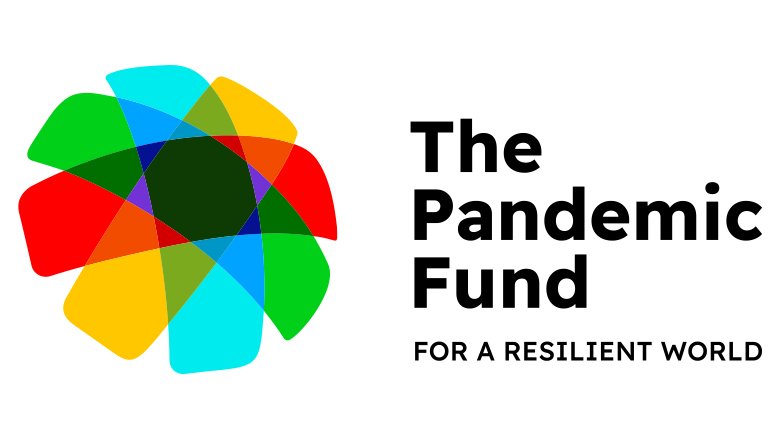This is one of 19 projects to which a grant was awarded by the Pandemic Fund under the First Call for Proposals. For information on the full set of projects supported by the First Call for Proposals, please refer to this press release.
Background
The Amazon Region accounts for approximately half of the earth’s biodiversity and its ecosystems are susceptible to the effects of climate change and human interference. Communities in the Amazon Basin are especially vulnerable to pandemic risks stemming from their remoteness and from exposure to wild vectors in tropical and subtropical areas. Arboviral diseases, acute diarrheal diseases, acute respiratory illnesses, and vaccine-preventable diseases are all significant risks. Poverty is widespread and infrastructure is limited. The PROTECT Project will be implemented in the border regions of seven countries of the Amazon Basin: Bolivia, Brazil, Chile, Colombia, Ecuador, Paraguay, and Uruguay. It has the goal of innovating and modernizing surveillance and laboratory systems in a way that explicitly includes rural and remote communities. The Project is a partnership between the Ministries of Health and Agriculture of the seven countries, the two Implementing Entities (PAHO/WHO and the World Bank), and the Pan American Center for Foot-and-Mouth Disease and Veterinary Public Health (PANAFTOSA/VPH). The Project is supported by a $17 million grant from the Pandemic Fund and is expected to leverage an additional $354 million in co-financing and $200,000 in co-investment.
The Project will directly target over 2.4 million beneficiaries. These include indigenous, non-indigenous and riverine communities, including migrants and displaced persons.
Project objectives
The overarching goal of the PROTECT project is to enhance the capacity, preparedness, and commitment of the participating countries for early detection and response to future pandemics through inter-sectoral and multi-level stakeholder coordination and cooperation in the Amazon Basin. Specific objectives include: (1) developing tailored community event-based surveillance guidelines and harmonizing national and regional roadmaps for early detection and surveillance of wildlife zoonotic diseases; (2) improving the capacity of laboratory systems to detect and respond to infectious diseases through portable device and advanced molecular detection technology; and (3) training key workforce on surveillance and risk assessment tools.
Implementation arrangements and key components
The Project Steering Committee will provide project oversight and policy and operational guidance for successful delivery. It will include the two IEs, representatives of the participating governments, key service delivery partners, and civil society representatives. The IEs will be responsible for leading the technical engagement with respective partners and stakeholders to advance implementation in their respective areas. They will report on progress and achievements and related performance indicators. PANAFTOSA/VPH will play a central role in fostering cross-sectoral collaboration between the human and animal health sectors given the experience it has accrued over the years working with the Ministries of Health and Agriculture in the participating countries. The grant will finance the following activities under the three main components. Implementing Entity involvement is shown in parentheses.
- Enhancing integrated early warning disease surveillance systems for zoonotic pathogens. The Project will support the development of national and regional community-based event surveillance guidelines based on evaluation and characterization of early detection and surveillance systems and capacities at local and community level in remote and border areas. It will develop and harmonize national and regional roadmaps for early detection and surveillance of wildlife zoonotic diseases based on gap analysis and joint prioritization. It will train community leaders, local health professionals and other stakeholders on community event-based surveillance. It will promote and implement joint risk analysis strategies and cross-sectoral surveillance tools for specific zoonotic diseases and will strengthen and promote tools and interoperable platforms for the upload and exchange of disease-specific surveillance information for early detection and rapid action (PAHO/WHO, World Bank).
- Increasing the efficiency of laboratory systems to detect pathogens of epidemic potential. This component supports assessments of the infrastructure and capacity of public health and animal health laboratories. It will develop and implement laboratory protocols for sequencing using portable devices and molecular detection for endemic and emerging pathogens. Training will be supported in genomic sequencing, bioinformatics, and analysis of viral pathogens, and specimen management and transportation of biological material according to national legislation and international standards. The component will procure equipment, reagents and other material for sequencing and molecular detection for human-animal health laboratories. It will support laboratory drills (PAHO/WHO).
- Strengthening coordination among sectors, countries, and across the region for pandemic preparedness and response efforts. This component supports monitoring the implementation of cross-border surveillance and effective and standardized information-sharing protocols across countries. It promotes mechanisms and training for cross-country information exchange and data sharing between human and animal health surveillance networks, integrated regionally and internationally. It will organize multi-stakeholder consultations at national and regional levels to identify priority areas for investment in the early detection and surveillance of zoonotic diseases. It will establish multisectoral task forces at subnational, national, and regional levels for community event-based surveillance for collaboration and coordination. The component will also provide support in organizing multi-stakeholder consultations within the countries and across the countries to identify investment priorities in the early detection of surveillance of zoonotic diseases (PAHO/WHO, World Bank).
Expected outcomes
Within the three-year implementation period, the implementation of the proposed activities under a One Health approach is expected to lead to: an enhanced and integrated early warning and disease surveillance system for the detection of public health threats in the Amazon Basin; increased efficiencies of laboratory systems to detect pandemic-causing pathogens; and most importantly, increased cooperation and coordination among sectors, countries, and within the region. These outcomes will better protect vulnerable communities and will reduce the health, social, and economic impacts and epidemics and pandemics.
Key Financial Statistics
| Amount Approved (US$) | Total Co-financing (in kind & in cash) (US$) | Total Co-investment (in kind & in cash) (US$) |
| 18,864,280 | 354,148,056 | 200,000 |
For inquiries about this project: Julie Mauvernay - mauvernj@paho.org
For media inquiries: Anita Rozowska - arozowska@worldbankgroup.org
For general inquiries: the_pandemic_fund@worldbank.org

